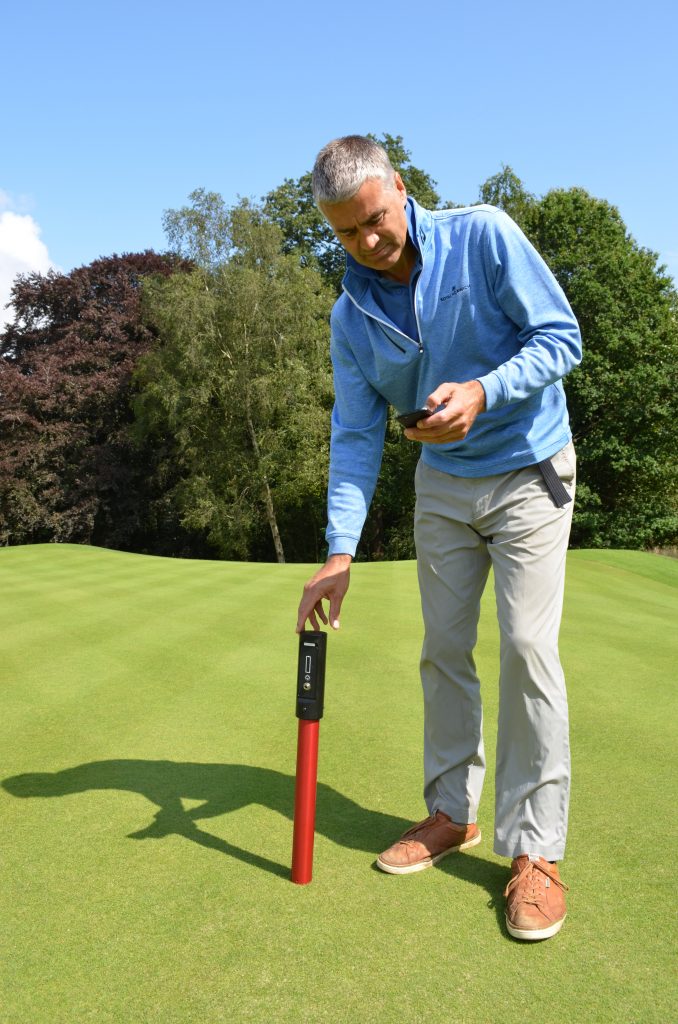This is how Royal Norwich’s new course’s soil is being managed
Related Articles
With Royal Norwich Golf Club investing £15 million in its newly established 18-hole course, the cost of its Rigby Taylor POGO Pro soil and turf management meter pales into insignificance. But, says estates manager Peter Todd, “the value of the benefits that POGO brings are priceless”.
He adds: “POGO has been indispensable in helping us to establish and maintain these new greens at a level to create a benchmark golf facility in the region.”

Peter – who joined Royal Norwich in 2017 with a course construction pedigree that includes experience at Gleneagles and the London Golf Club – has an obvious biased opinion of the course sited a few miles from the club’s original home that was established in 1893 by, among others, Sir Jeremiah Colman, of Colman’s mustard fame.
The course has been over two years in construction and aside from Peter’s initial agronomy work, for instance, its creation has also involved collaborative discussions, and decisions, with course architect Ross McMurray (European Golf Design) as well as course construction contractor M J Abbott and irrigation specialist Rain Bird.
After their deliberations, and the use of around 11,000 tonnes of sand to construct the tees, greens and bunkers – on a site characterised by a predominantly sandy-loam profile – the result is a stunning 18-hole, 7,239-yards course that many will agree justifies Peter’s views.
The USGA greens are accompanied by a six-hole academy course, constructed to the same exacting USGA standards, complemented by a 10-bay practice range, and there are restaurant areas and other ‘customer experience’ facilities that would not be out of place in a luxury leisure complex.

Course design is very sympathetic to the existing landscape with, for example, many of the holes being designed around age-old oak trees and with due consideration to the incumbent wildlife.
“While golf is certainly at the heart of the club’s new development, we’ve deliberately designed the facility with the aim of attracting families to the 330-acre estate,” says Peter. “It is all about creating the perfect leisure-lifestyle experience for everyone.”
The complex will be maintained by a team of 13 greenkeepers including an in-house workshop technician, with all the team housed in a modern Turf Care Centre of Excellence boasting a state-of-the-art mower blade grinding/sharpening area and including a training room where visitors (even club members) can learn about all aspects of the course and its operation – including the benefits being obtained by the POGO Pro turf meter.
Peter’s enthusiasm for the potential of the site is also reflected in his views about POGO Pro and how the course – and its players – will benefit from the system’s ability to measure the most influential variables governing turf performance; moisture, salinity, canopy temperature, nutrition and turf stress / disease, for example.

“Moisture management is critical on USGA greens so I needed a tool that would give me unquestionable and ultra-reliable data on the greens, which we gather daily. POGO Pro gives me exactly that. Importantly, the system is not just about enabling us to establish and maintain consistent playing conditions. It’s also about helping us to manage our water usage much more efficiently and we will see the real rewards from that in the future.”
POGO Pro also connects remotely to any Apple or android device and its integrated GPS features include precise location, geospatial condition analysis, cup placements, sprinkler positioning and patterns, area measurement and custom mapping. Maps can also be created of the dry and wet areas, and graphs will show the history of each green (all greens) so that users can make informed decisions on watering and feeding programmes.

“The system is so user-friendly,” adds Peter, “and its data collection ability is a powerful tool and has helped us establish these first-class greens.
“While I fully expect that within a few years, using cloud-based technology, the data we collect will be able to be imported directly into the irrigation system – to enable us to automatically manipulate individual watering heads according to the specific ‘local’ irrigation needs – for the immediate future, I am totally satisfied that POGO Pro has proved a major asset in helping us establish a course that sets a new benchmark for golf in the region.”

























